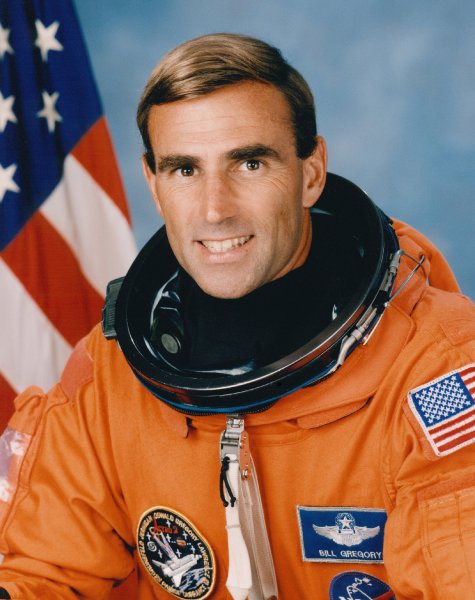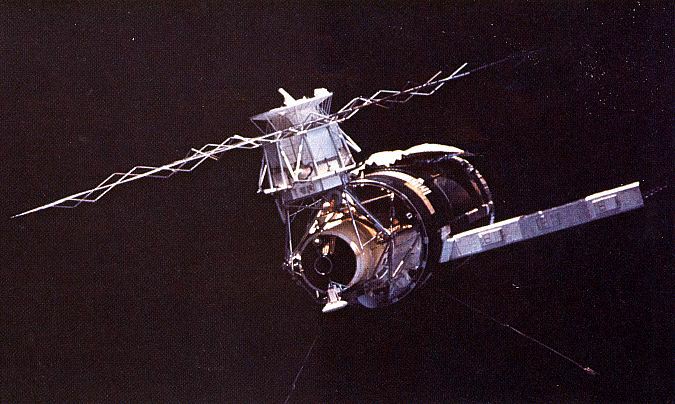If you are not already a subscriber, you are welcome to enter your email address here to sign up to receive the Space History newsletter on a daily basis. Under no circumstances will we release your legitimate email address entered here to outside persons or organizations, and it will only be used for mailing the specific information you have requested.
| Enter your email address here: |
Unsubscribe instructions are included in every newsletter issue in case you decide you no longer wish to receive it.
Note: We record the IP address from which subscriptions are entered to help prevent SPAM abuses.
Race To Space
Someone will win the prize...
... but at what cost?
Visit RaceToSpaceProject.com
to find out more!
1679
Born, Peder [Nielsen] Horrebow, Danish astronomer
ref: en.wikipedia.org
1861 13:30:00 GMT
The Canellas meteorite, an 859-gram chondrite-type meteorite, struck the Earth near Barcelona, Spain.
ref: www.astronomy.activeboard.com
1879
C. H. F. Peters discovered asteroid #196 Philomela.
1908
Charley Furnas, a 28-year-old mechanic, became the first airplane passenger, flying at Kitty Hawk with both Wilbur and Orville Wright.
ref: www.wright-brothers.org
1917
M. Wolf discovered asteroid #871 Amneris.
1931
The German Mirak II/Repulsor I rocket reached 60 meters altitude in a looping trajectory that sent the observers running for cover.
In the first official test flight of the Mirak (Minimum Rakete) II, a flight-weight version of Riedel's 'flying test stand' took off into a looping trajectory, sending the VfR experimenters running for cover, but reaching an altitude of 60 meters in the process. Attending were Wernher Von Braun, Klaus Riedel and Kurt Heinisch. (Rudolf Nebel, the chief engineer, was in Kiel at the time.)
ref: books.google.com
1933
The American Interplanetary Society (AIS) Rocket Number 2 was successfully fired at Great Kills, Staten Island, New York. It reached an altitude of 250 feet (80 meters) in two seconds before the liquid oxygen tank burst.
AIS #1, as their first rocket was called, was to be launched on November 12, 1931. It had cost the grand sum of $49.40 - $30.60 for the rocket and $18.89 for the test stand, propellant, batteries, and other supplies. Most of their supplies were donated, or improvised – the aluminum can that served as a water jacket for the motor was actually a malted milk shaker, for example. The launch site chosen was an empty farm field near Stockton, New Jersey. Unfortunately, the rocket slipped while being mounted, fell to the ground and was twisted out of alignment, ending its short career.
AIS#2 was built of salvaged parts from #1, along with bailing wire, razor blades, and other cast-offs. It had balsa wood fins and valves scavenged from gas light fixtures. The group received permission to launch the rocket in Great Kills Park, on Staten Island, and on 14 May 1933, they held the first public launch of a rocket, captured by crews from both Acme and Universal Newsreels. The rocket roared 250 feet into the air, where the oxygen tank burst and fell into lower New York Bay.
ref: web.archive.org
1935
Griffith Observatory opened to the public in Los Angeles, California, including the third planetarium in the US.
ref: web.archive.org
1952
Born, Donald "Don" Ray McMonagle (at Flint, Michigan, USA), Colonel USAF, NASA astronaut (STS 39, STS 54, STS 66; over 25d 5.5h total time in spaceflight), Manager, Launch Integration, Kennedy Space Center, from 15 August 1997

Astronaut Don McMonagle, NASA photo
Source: Wikipedia (www.jsc.nasa.gov unavailable May 2019)
ref: en.wikipedia.org
1957
Born, William George Gregory (at Lockport, New York, USA), Lt. Colonel USAF, NASA astronaut (STS 67; over 16d 15h in spaceflight)

Astronaut William G. Gregory, NASA photo
Source: Wikipedia (www.jsc.nasa.gov unavailable May 2019)
ref: www.nasa.gov
1963 15:45:00 GMT
NASA launched the Aerobee 150 Paraglider Technology mission which reached an altitude of 185 km (115 miles).
ref: books.google.com
1963 20:11:00 GMT
USAF pilot Robert Rushworth reached a speed of 3600 mph (5794 kph, Mach 5.20), and an altitude of 95,600 feet (29.139 km, 18.106 mi) in X-15A flight 82, a Heating, UVP, IR Test/Ultraviolet Astronomy/Technology mission.
ref: en.wikipedia.org
1964
Born, James McNeal "Vegas" Kelly (at Burlington, Iowa, USA), Colonel USAF, NASA astronaut (STS 102, STS 114; over 26d 17.25h total time in spaceflight)

Astronaut James M. Kelly, STS-114 pilot, NASA photo (28 January 2005)
ref: www.nasa.gov
1972
T. Smirnova discovered asteroid #1905 Ambartsumian.
1973 17:30:00 GMT
NASA launched Skylab, its first orbital space station.

Skylab in orbit, NASA photo
Source: NSSDCA Master Catalog
NASA's Skylab (SL), launched 14 May 1973, was an orbiting space station manned by crews arriving via separate launches. Skylab was composed of five parts, the Apollo telescope mount (ATM), the multiple docking adapter (MDA), the airlock module (AM), the instrument unit (IU), and the orbital workshop (OWS). Skylab was in the form of a cylinder, with the ATM being positioned 90 degrees from the longitudinal axis after insertion into orbit. The ATM was a solar observatory, and it provided attitude control and experiment pointing for the rest of the cluster. It was attached to the MDA and AM at one end of the OWS. Installation and retrieval of film used in the ATM was accomplished by astronauts during extravehicular activity (EVA). The MDA served as a dock for the command and service modules of the visiting manned spacecraft which served as personnel taxis to Skylab. The AM provided an airlock between the MDA and the OWS, and contained controls and instrumentation. The IU, which was used only during launch and the initial phases of operation, provided guidance and sequencing functions for the initial deployment of the ATM, solar arrays, etc.
The OWS was actually the refitted S-IVB second stage of a Saturn IB booster (from the AS-212 vehicle), a leftover from the Apollo program originally intended for one of the canceled Apollo Earth orbital missions, modified for long duration manned habitation in orbit. It contained provisions and crew quarters necessary to support three-person crews for periods of up to 84 days each. All parts were also capable of unmanned, in-orbit storage, reactivation, and reuse.
Skylab was originally planned as a minimially-altered S-IVB to be launched on a Saturn IB. The small size of the IB would have required Skylab to double as a rocket stage during launch, only being retrofitted as a space station once it was in orbit. With the cancellation of Apollo missions 18-20, a Saturn V was made available and thus the "Wet Workshop" concept, as it was called, was put aside and Skylab was launched dry and fully outfitted. Skylab's grid flooring system was a highly visible legacy of the wet workshop concept.
Severe damage was sustained during launch, including the loss of the station's micrometeoroid shield/sun shade and one of its main solar panels: An unexpected telemetry indication of meteoroid shield deployment and solar array wing 2 beam fairing separation was received 1 minute and 3 seconds after liftoff. Debris from the lost micrometeroid shield further complicated matters by pinning the remaining solar panel to the side of the station, preventing its deployment, thus leaving the station with a huge power deficit. Without the solar shield, temperatures soared in the station. The station underwent extensive repair during a spacewalk by the first crew; repairs by crews throughout the manned stays led to virtually all mission objectives being met.
The first Skylab crew was aboard from 25 May to 22 June 1973, the crew of the SL-2 mission (73-032A). Next, it was manned during the period 28 July to 25 September 1973, by the crew of the SL-3 mission (73-050A). The final manned period was from 16 November 1973 to 8 February 1974, when it was inhabited by the SL-4 mission (73-090A) crew.
Skylab orbited Earth 2,476 times during the 171 days and 13 hours of its occupation during the three manned Skylab missions; astronauts performed ten spacewalks totalling 42 hours 16 minutes. Skylab logged approximately 2,000 hours of scientific and medical experiments, including eight solar experiments: The coronal holes in the Sun were discovered; many medical experiments were on astronauts' adaptation to extended periods of microgravity. Each successive Skylab mission set a record for the duration of time the astronauts spent in space.
Following the final manned phase of the Skylab mission, ground controllers performed some engineering tests of certain Skylab systems, tests that ground personnel were reluctant to do while men were aboard. Results from these tests helped to determine causes of failures during the mission, and to obtain data on long term degradation of space systems.
Upon completion of the engineering tests, Skylab was positioned into a stable attitude and systems were shut down. It was expected that Skylab would remain in orbit eight to ten years. It was to have been visited by an early shuttle mission, reboosted into a higher orbit, and used by space shuttle crews, but delays in the first flight of the shuttle made this impossible: Increased solar activity heating the outer layers of the Earth's atmosphere, thereby increasing the drag on the station, led to an early reentry on 11 July 1979. Skylab disintegrated over the Indian Ocean and Western Australia after a worldwide scare over its pending crash, casting large pieces of debris in populated areas. Fortunately, the only casualty was a single Australian cow.
Two flight quality Skylabs were built, the second, a backup, is on display at the National Air and Space Museum in Washington, DC.
ref: nssdc.gsfc.nasa.gov
1974
The US Postal Service issued a Skylab Program commemorative stamp.

Skylab commemorative stamp, NASA photo
Source: NASA LRC Researcher News
1978
Died, William Lear, American inventor (autopilot, automobile radio, eight-track tape player, Lear Jet Corporation)
ref: www.invent.org
1981 17:16:00 GMT
USSR launched Soyuz 40, which transported the ninth international crew under the INTERCOSMOS program to the Salyut 6 orbital station, comprising L. I. Popov (USSR), and D. Prunariu (Romania), to conduct scientific research and experiments.
ref: nssdc.gsfc.nasa.gov
1981 21:50:00 GMT
USSR launched the Meteor 2-07 weather satellite.
ref: nssdc.gsfc.nasa.gov
1985
C. Shoemaker discovered asteroid #3553 Mera.
1991 15:52:00 GMT
The US NOAA 12 satellite was launched from Vandenburg Air Force Base, a spacecraft engaged in research and exploration of the upper atmosphere or outer space.
ref: nssdc.gsfc.nasa.gov
1992 00:40:00 GMT
The Indonesian Palapa B4 communications satellite was launched from Cape Canaveral, Florida.
ref: nssdc.gsfc.nasa.gov
1998 22:12:59 GMT
Russia launched Progress M-39 carrying supplies and scientific experiments to the Mir space station.
ref: nssdc.gsfc.nasa.gov
We are going to run out of oil!
Visit SpacePowerNow.org
to help fix the problem.
SpacePowerNow.org - For Human Survival
This newsletter and its contents are Copyright © 2006-2025 by The L5 Development Group. All rights reserved. - Publication, in part or in whole, requires previous written permission. - Academic or personal-use citations must refer to http://L5Development.com as their source. Thank you for your cooperation.
Space History Department
Resources
The L5 Development Group Home Page
The L5 Development Group Keyword Access System
Space History for May 14 /
Webmaster /
Script last modified August 23, 2018 @ 6:05 am
Copyright © 2006-2025 by The L5 Development Group. All rights reserved.
Hosted by FKEinternet



